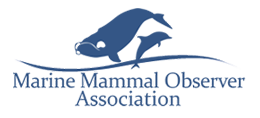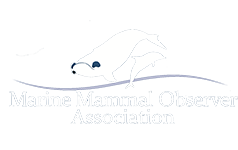The preservation of marine ecosystems has become increasingly urgent amidst escalating environmental threats. A well-used tool for monitoring and mitigation is Passive Acoustic Monitoring (PAM), which provides valuable insights into the underwater environment.
Passive Acoustic Monitoring (PAM) is used to study marine environments by acquiring sound with hydrophones that detect and PAM operators can analyse acoustic signals emitted by marine organisms, including whales, dolphins, fish, and even invertebrates. By capturing and interpreting these intricate acoustic signatures, scientists and PAM operators can glean invaluable insights into the behaviour, distribution, and abundance of marine species, as well as the ecological dynamics of their habitats. As mitigation professionals, we know PAM is readily used as a mitigation tool and the new guidance provided by JNCC sets a standard for the effective utilisation of PAM technology, ensuring that stakeholders can implement monitoring and mitigation strategies with accuracy and consistency.
The Launch of PAM Guidance by JNCC
The Joint Nature Conservation Committee (JNCC) has released comprehensive guidance on the implementation of Passive Acoustic Monitoring (PAM) techniques. This resource, available on the JNCC website, represents the culmination of extensive research, collaboration, and expertise within the scientific community. Designed to serve as a definitive reference for practitioners, policymakers, and stakeholders, the PAM guidance encompasses a wide range of topics, including methodology, equipment selection, data analysis, and best practices for maximizing the efficacy and reliability of PAM applications.
Key Features and Benefits of PAM Guidance
The launch of PAM guidance by JNCC heralds a host of transformative benefits for marine mitigation:
- Standardisation and consistency: By establishing standardised protocols and methodologies for PAM implementation, the guidance ensures consistency and comparability across diverse mitigation projects, research initiatives and monitoring programs.
- Enhanced monitoring capabilities: PAM enables mitigation professionals and researchers to monitor marine environments with precision and resolution, offering insights into elusive and cryptic species that may elude traditional survey methods.
- Mitigation of anthropogenic impacts: By detecting and quantifying anthropogenic noise pollution, PAM facilitates the implementation of targeted mitigation measures to minimise the adverse effects of human activities on marine ecosystems and wildlife.
- Informing conservation strategies: The data generated through PAM initiatives provide invaluable input for the development of evidence-based conservation strategies, management plans, and policy interventions aimed at safeguarding marine biodiversity and ecosystem health.
- Capacity building and knowledge sharing: Through the dissemination of PAM guidance and training resources, JNCC encourage capacity building and knowledge sharing within the mitigation and scientific community, empowering stakeholders to harness the full potential of PAM technology for marine conservation.
Looking Towards the Future
In 2021, the National Oceanic and Atmospheric Administration (NOAA) and the Bureau of Ocean Energy Management (BOEM) released their 'Recommendations for Use of Passive Acoustic Listening Systems in Offshore Wind Energy Development Monitoring and Mitigation Programs' and now we have the new JNCC PAM guidance, mitigation professionals worldwide are now able to standardise their collective efforts to protect and preserve our oceans for future generations. By harnessing the transformative power of Passive Acoustic Monitoring, stakeholders can embark on a journey of discovery, understanding, and stewardship, ensuring that our oceans remain vibrant, resilient, and teeming with life for millennia to come.


